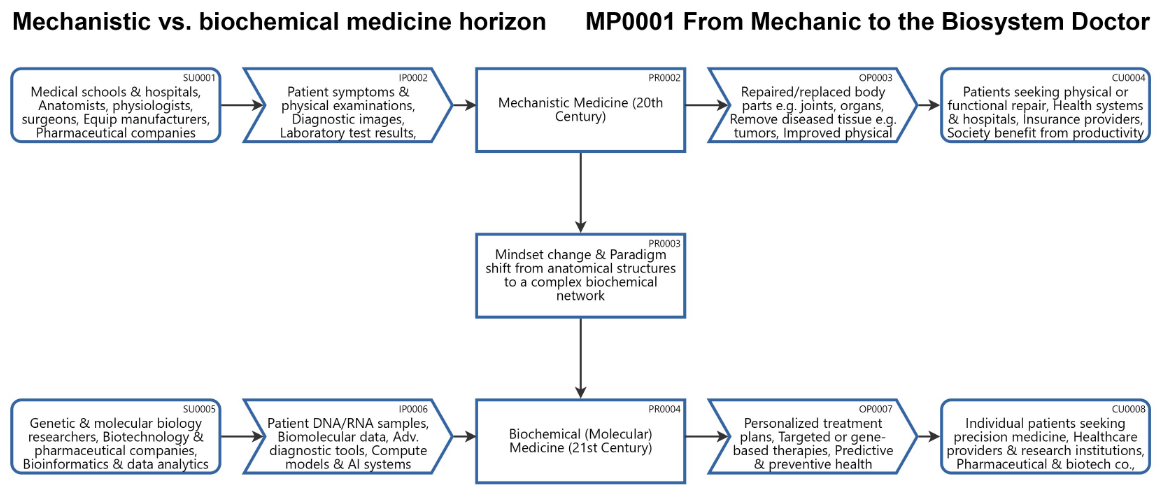From the Mechanic to the Biosystem Doctor: Changing Models of the Body

The 20th century is often called the age of mechanistic medicine because it viewed the human body as a complex machine whose parts could malfunction and be repaired or replaced. This perspective led to the rise of highly specialized fields such as cardiology, orthopedics, ENT, ophthalmology & plastic surgery, each focusing on specific organs or systems. Advances in surgery, prosthetics, organ transplants and even cancer treatment were based on physically removing, repairing or replacing diseased tissues, as seen also in the growth of cosmetic and reconstructive procedures.
The 20th century’s medicine treated the body as a complex machine focusing on fixing its body parts, (~800 to 1,000 named parts (bones, muscles, organs, etc.), sic the mechanistic anatomical view.
In contrast, the 21st century is regarded as the age of biochemical medicine, where the focus has shifted from structure to function at the molecular level. Diseases are now understood as disruptions in genetic, protein or metabolic processes, giving rise to genomic medicine, targeted therapies & personalized treatments designed to correct biochemical imbalances rather than just repair physical damage.
The 21st century’s medicine sees the body as a biochemical network (>100,000 “parts” (genes, proteins, metabolites, molecular complexes), a dynamic system governed by molecular interactions aiming to correct disease by modifying these molecular processes.
The shift from mechanistic to biochemical medicine represents a profound transformation in how we understand, prevent and treat disease.
To ensure that these advances translate into sustainable, equitable and high-quality healthcare, a new GRC (Governance, Risk & Compliance) framework for medicine is increasingly essential. Such a framework would help manage the ethical, regulatory and financial risks of genomic and data-driven medicine, ensure transparency and accountability in research and treatment and align healthcare innovation with Total Quality Management (TQM) principles, continuous improvement, patient-centeredness, error reduction and process efficiency.
Using the following link you can access this sandbox SIPOC model in the ProcessHorizon web app and adapt it to your needs (easy customizing) and export or print the automagically created visual AllinOne SIPOC map as a PDF document or share it with your peers: https://app.processhorizon.com/enterprises/oLYLbvoVVv5q16tFJvqU86Eh/frontend

